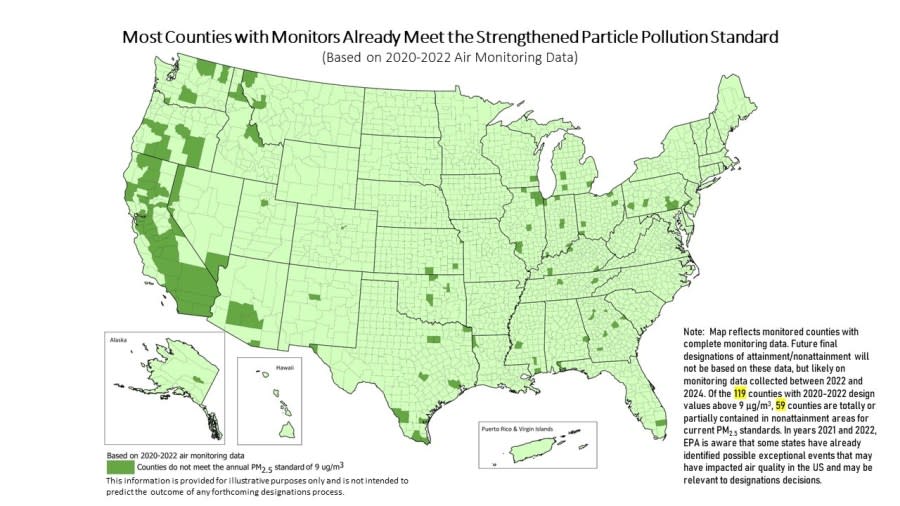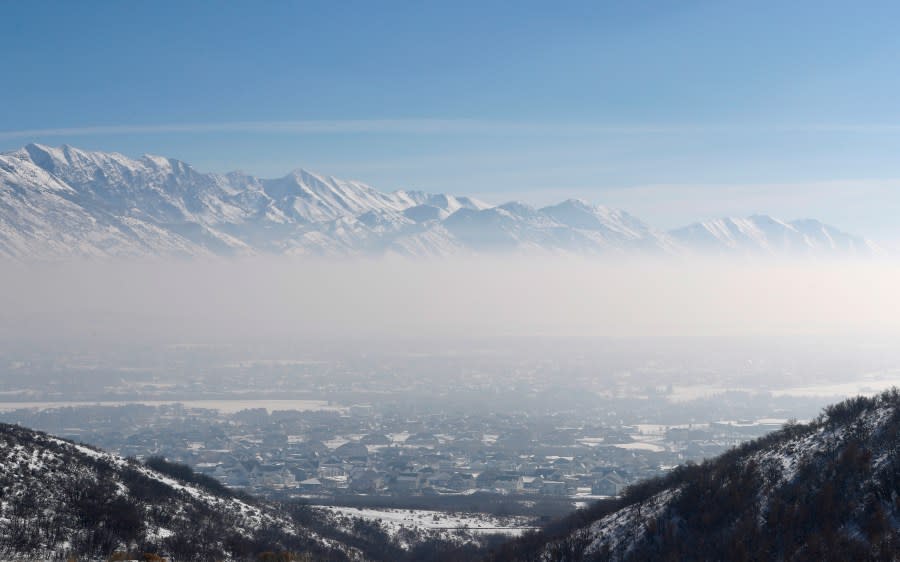Why the EPA’s updated air quality standards won’t mean much for Utah
SALT LAKE CITY (ABC4) — The U.S Environmental Protection Agency on Wednesday updated national air quality standards for fine particle pollution, but it won’t likely mean much for those living along the Wasatch Front.
“This is a really important policy for the country as a whole,” said Logan Mitchell, a climate scientist with the nonprofit Utah Clean Energy.
“But here in Utah, our air pollution challenges are episodic. We have really bad air quality during winter time inversions, but if you average out the data over the year, we actually have really good air quality.”
Politicians claim Utah’s air is cleaner and better. Is that true?
Mitchell said that Utah is pretty close to meeting the new standards, which were updated to be in accord with the latest scientific evidence. According to federal air quality monitoring data from 2020 to 2022, only Salt Lake County falls short of meeting the new standards.
Becky Close, environmental program manager at the Utah Division of Air Quality, said the air quality monitor in Salt Lake County is not like those in the rest of the state, as it sits very close to I-15.
“It’s not typical of what we call ambient air quality,” she said.
The New Standards
What the new rule does is boost the annual standard national ambient air quality for fine particulate matter pollution, also known as PM2.5, changing it from a level of 12 micrograms per cubic meter to 9 micrograms per cubic meter.
Breathing in the tiny pollutants — which are about 100 times smaller than the thickness of a human hair — can lead to serious long-term health conditions, such as heart attacks and strokes.
“Those tiny particles, they get not just into the lungs, but they get into the bloodstream and that sets off inflammation and clotting that leads to these other downstream effects throughout the body,” said Dr. Denitza Blagev, a pulmonary and critical care physician at Intermountain Health.

Officials with the Biden administration say these updated standards will save lives, calculating that by the year 2032, it will prevent up to 4,500 premature deaths and account for $46 billion in net health benefits.
By 2032, federal officials estimate most of the country — including all of Utah — will meet the new air quality standards. About 50 counties across are expected to still be short. Nearly half of them are in California.
Utah’s unique problems
Utah Physicians for a Healthy Environment (UPHE), a group of roughly 400 medical professionals in the Beehive State, said the EPA should have also updated its 24-hour air quality standard.
The 24-hour standard was put in place to take into account short-term spikes in pollution, such as an inversion event. That standard remains at 35 micrograms per cubic meter.
“On the one hand this is a bold and scientifically sound move by EPA, and they are to be congratulated for taking this action,” said UPHE president Dr. Brian Moench.

“But for the majority of Utah residents, that the EPA did not tighten the 24-hour standard means they will receive very little benefit because the episodic pattern of our air pollution is exactly what that 24-hour standard was meant to address.”
The 24-hour standard has remained unchanged since 2006, Moech noted, adding that the EPA “should have acted long ago to tighten it as well.”
Moving forward
During inversion events in northern Utah, roughly half of the pollutants that get trapped in the air above the valleys are from vehicles. The remainder is from buildings and industry.
According to Mitchell, Utah’s air quality has been steadily improving over the last several decades, even as the state’s population grows, especially along the Wasatch Front. These improvements are the result of regulation and improved technologies, such as cleaner cars.
“Though our air quality is probably better than it’s been in 150 years, it doesn’t mean it’s totally clean,” he said. “There is no safe level of air pollution.”
Mitchell said that instead of relying on federal officials to bring continued improvements to Utah’s air quality, he said that the state needs to continue to lean into its history of progress.
“We’ve been leveraging more innovation in technologies that has allowed us to grow while also reducing our air pollution,” he said. “We need to continue doing that. We have a record of doing that in the past, and we need to put more weight into that.”
For the latest news, weather, sports, and streaming video, head to ABC4 Utah.

